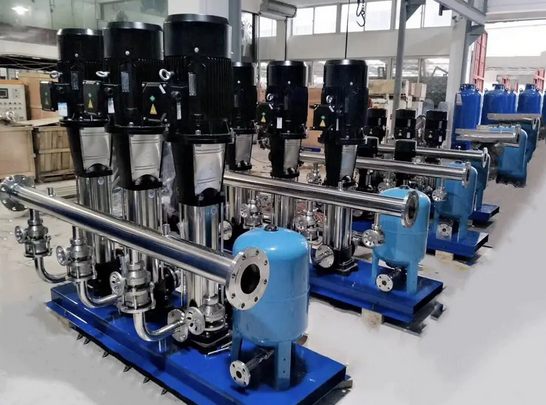Temporary water supply solution for construction site production
The temporary water supply solution for construction site production is a comprehensive project that requires consideration of water source selection, water quality assurance, water storage and distribution, water supply equipment configuration, and safety maintenance. The following is a detailed solution:
1. Water source selection
Tap water is preferred: The tap water supply is stable and the water quality is guaranteed, which is the first choice for temporary water supply on the construction site.
Alternative water sources: If the tap water supply is insufficient or not feasible, alternative water sources such as groundwater, river water or lake water can be considered. When selecting, sufficient water quality testing and evaluation are required to ensure that the water quality meets the water standards for construction sites.
2. Water quality assurance
Water quality testing: Before using any water source, it should be fully tested for water quality, including key indicators such as pH value, turbidity, bacteria and heavy metal content.
Regular monitoring: During use, the water quality should be monitored regularly to ensure that the water quality continues to meet the standards.

3. Water storage and distribution
Set up temporary water storage facilities: According to the needs of the construction site and the results of water quality tests, set up reasonable temporary water storage facilities, such as large water tanks or plastic buckets, and determine the reasonable water storage capacity.
Water extraction and transportation: Use pumps or water pipes to extract water from the water source to temporary storage facilities, and then distribute it to different construction areas through transportation pipelines. The transportation pipelines should be reasonably laid out to ensure that each water point can get sufficient water.
4. Water supply equipment configuration
Water pump configuration: According to the water consumption and head requirements of the construction site, configure a suitable water pump and ensure its stable performance and high efficiency. At the same time, a backup pump should be set up to deal with emergencies.
Pipeline laying: Use corrosion-resistant and pressure-resistant pipes such as welded steel pipes or PE pipes to lay the water supply network, and set pipes of different diameters according to actual needs. The laying of the pipeline network should be reasonably planned to reduce the number of elbows and joints and reduce the risk of water leakage.
Water-saving measures: Water-saving taps are set at temporary water points, and they are regularly inspected and maintained to prevent water leakage. At the same time, rainwater or wastewater can be collected for secondary use, such as on-site sprinkling and dust reduction or concrete maintenance.
5. Safety maintenance
Set up safety signs: Set up warning signs around water storage facilities to remind workers to pay attention to safety. Especially when the water quality is unclear or there are other risks, safety reminders need to be strengthened.
Safety inspections: Regularly conduct safety inspections of water supply equipment to check its safety and integrity. Ensure that the equipment operates normally without water leakage or other safety hazards.
Training and education: Train and educate construction personnel to understand the importance of temporary water supply plans and safety measures, and master the correct operation methods.
Fire safety: Set up fire extinguishers around the construction site and check the effectiveness of fire extinguishers regularly. Ensure that fire risks can be responded to in a timely manner in an emergency. At the same time, fire hydrants and fire pools and other firefighting facilities are set up according to actual needs.




